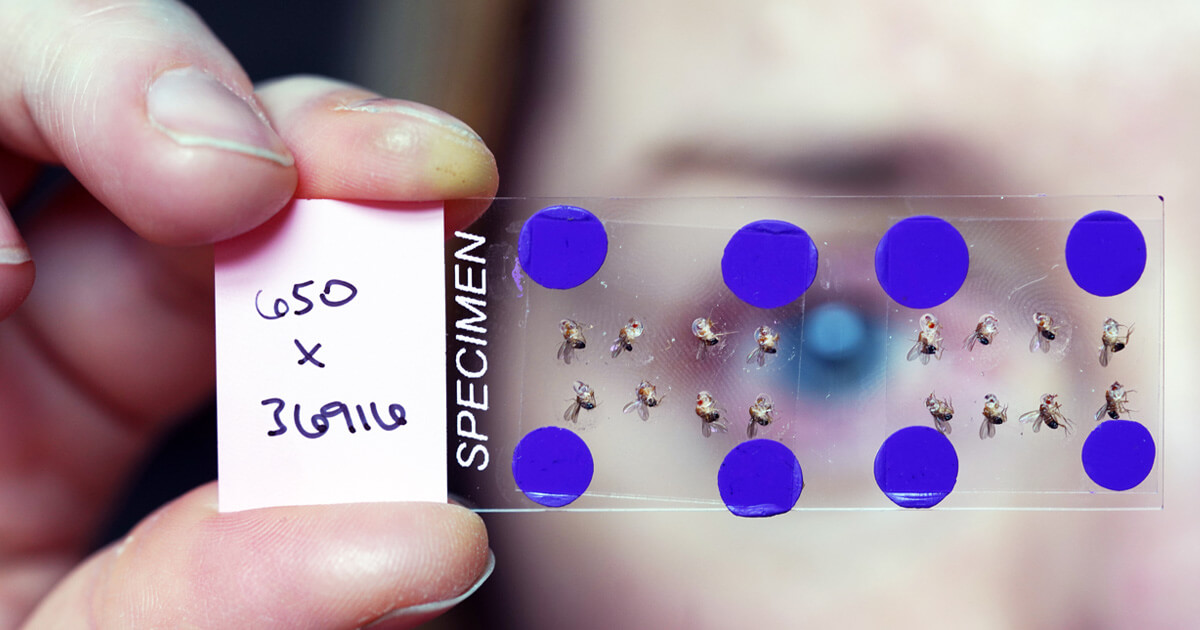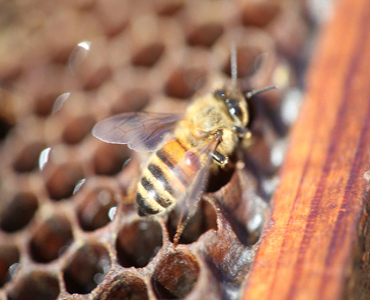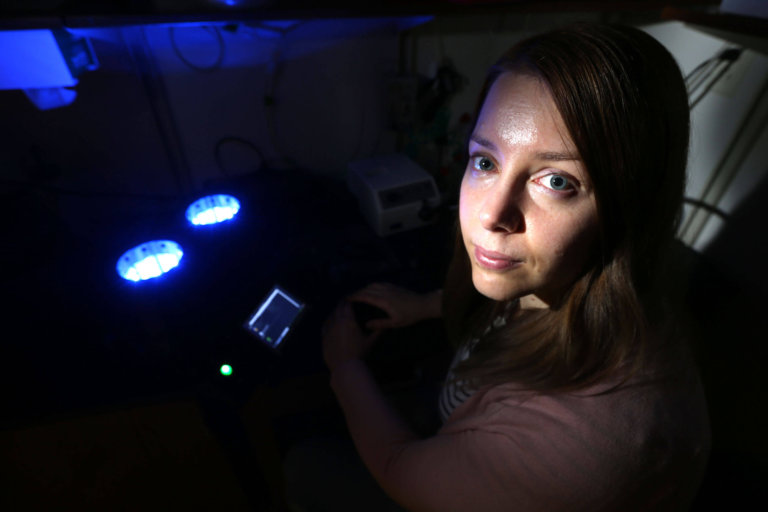News from the Weake Lab
March 2024: Sarah Stanhope was awarded a F31 graduate fellowship from the NIH for her proposal "Characterizing Ahcy as a redox regulated enzyme in the Drosophila eye under oxidative stress". Congratulations Sarah! You can read about Sarah's work here.
Oxidative stress is an important factor in both aging and ocular disease and can cause chemical changes to proteins, particularly on redox-sensitive cysteine residues. Although sometimes these redox changes can be damaging, they can also act as signals to alter the activity of proteins and allow the cell to respond to increasing levels of oxidative stress. Sarah Stanhope developed and used a specialized proteomic technique to profile the redox proteome of Drosophila eyes exposed to light stress or during aging, and identified changes in cysteine availability that indicate oxidation of specific proteins. Intriguingly - the phototransduction machinery that senses light in the eye was a major target for cysteine oxidation - suggesting that redox signaling might be involved in regulation of this pathway. You can read about Sarah's work published in Redox Biology
Our cells have a molecular clock that maintains 24 hour rhythmns for many biological functions, and this clock seems to have particularly important functions in the cells in the eye that sense and respond to light. Juan Pablo (Jupa) Jauregui-Lozano developed and improved genetic approaches to profile the transcriptome and epigenome of photoreceptor cells (see Genetics for a description of this approach) to show that the activity of the clock transcription factors, Clock and Cycle, changes in photoreceptors as they age. He also showed that disrupting the molecular clock in photoreceptors has major impacts on expression of many genes and causes premature retinal generation. These studies were published in Plos Genetics and suggest that maintaining the function of the circadian clock might be important to protect the aging eye from damage and disease.
Eliana Torres-Zelada is now a postdoctoral researcher in Melissa Harrison's lab at the University of Wisconsin-Madison, Spencer Escobedo is working as a Scientist for PHCS Assay Development at Roche Tissue Diagnostics in Arizona, and Juan Pablo (Jupa) Jauregui-Lozano is working as a postdoctoral researcher with Judith Zaugg at EMBL in Germany. We are so proud of all of you!
Weake Lab picture is featured in Friday Photo gallery on April 29, 2022.
Friday Photo is a series of weekly photographs chronicling life in the College of Agriculture.

Fruit flies serve as the model to study the human retina for the team led by Vikki Weake, Department of Biochemistry professor. Learn more about this groundbreaking research.

The transition of a honey bee nurse to a forager is critical to the success of a colony. By accelerating or reversing the shift from nursing to foraging, a honey bee colony can buffer itself from pests, pathogens or pesticides. Despite its critical importance this transition has on honey bee colony health and the existence of genetic tools like CRISPR-Cas9, scientists don’t have a complete understanding of the mechanisms behind it: which genes cause this shift and how exactly do they work to cause such dramatic shifts in behavior?
Brock Harpur, an assistant professor of entomology, Vikki Weake, an associate professor of biochemistry, and graduate student Stephanie Hathaway are working to develop a new genetic expression system that allows them to overcome these challenges and understand how honey bees regulate the transition to and from nursing and foraging. Their system will allow scientists to test cause-and-effect hypotheses between honey bee genes and observed phenotypes.
For decades, scientists have known that blue light will make fruit flies go blind, but it wasn’t clear why. Now, a Purdue University study has found how this light kills cells in the flies’ eyes, and that could prove a useful model for understanding human ocular diseases such as macular degeneration.
Vikki Weake, assistant professor in Purdue’s Department of Biochemistry, studies aging in the eye and the genetic mechanisms that lead to vision loss as people age. Working with Donald Ready, a professor in Purdue’s Department of Biological Sciences, and Daniel Leon-Salas, an associate professor in the School of Engineering Technology, Weake led a team that compared older fruit flies susceptible to vision loss when exposed to blue light with young flies that are immune to the effects of that light.
“When you put older flies in the presence of really strong blue light, you basically overload the neurons and the photoreceptor cells in their eyes die,” said Weake, whose findings were published in the journal npj Aging and Mechanisms of Disease, a partner journal of Nature. “But this doesn’t have to be. There are natural conditions that confer resilience as we see with young flies.”

Purdue University assistant professor Vikki Weake led a study on vision loss in flies. The results, which were published in a scientific journal, could prove useful in understanding human ocular diseases. (Purdue University photo/Tom Campbell)
Weake’s team found that retinal degeneration in the flies strongly correlated with lipid peroxidation, oxidative damage caused to lipids by reactive oxygen species. Young flies showed no signs of lipid peroxidation.
“Cells in the eye are high in polyunsaturated fatty acids, and that makes those cells highly sensitive to this type of damage,” Weake said. “That makes this a very dangerous environment.”
Read more...